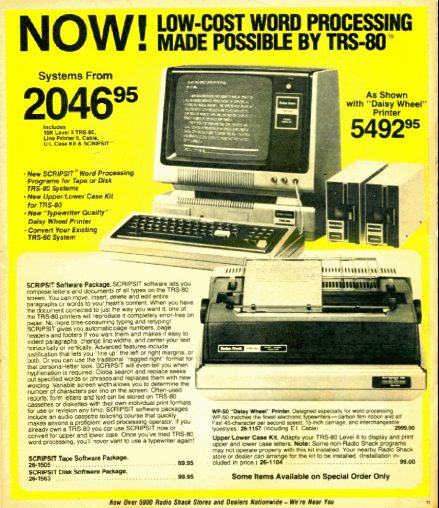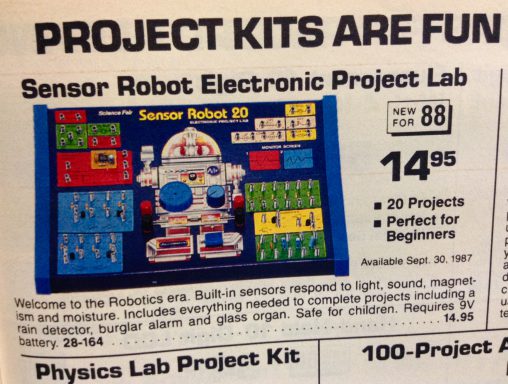
After 94 years in business, US consumer electronics retailer RadioShack filed for Chapter 11 bankruptcy protection in February 2014, unable to service its $1.39 billion debt.
Under its bankruptcy plan, around half of its 4,000 stores will close and 1,750 will become cobranded Sprint/RadioShack stores. Wireless carrier Sprint will operate as a “store within a store” and leave the rest of the floor space to RadioShack products.
RadioShack had been on a downward spiral for some time, having posted 11 straight quarterly losses after a failed attempt to capture the mobile phone market.
Falling sales, the rise of Amazon and eCommerce, and out-dated stores and stock are some of the reasons attributed to the demise of the business.
RadioShack also failed to reinvent itself, or convincingly execute a new strategy. In September 2014, when bankruptcy appeared inevitable, Steven Davidoff Solomon, a professor of law at the University of California, wrote in The New York Times:
RadioShack could have been [big box retailer] Best Buy. It could have been Amazon. It could have become Dell. The paths that RadioShack could have taken are numerous. But instead of choosing one, it chose them all, walking away from its place as a hobbyist’s dream. So what can we learn? RadioShack suffered from poor, often overpaid, leadership, which could not focus on a single plan and then was left grasping for a rescue strategy.

Vaughan Strawbridge, a partner at Deloitte’s Restructuring Services, has extensive experience working with the Australian retail industry. He made the point that this collapse didn’t happen overnight.
RadioShack had a high debt structure, large store network and struggled to remain relevant, he said.
Strawbridge also said RadioShack’s extensive store network, but small store sizes, hurt the company, meaning it couldn’t compete with big box retailers on range or price.
So what can Australian retailers learn from RadioShack’s experience? Strawbridge provided these insights.
Know if your business model needs to change
It is fundamental for retailers to know if their business model is going to need to change and if it does, to then move quickly.
Retailers can assess the health of their business by knowing it inside and out, and asking: What is my core business? It is still relevant? Is it profitable? And where is the market moving?
Integrate your digital strategy with day-to-day operations
Selling products online is not enough to constitute a successful digital strategy. The operational side must be efficient as well. Mistakes in this area can be as basic as poor warehousing structure, for example, separating online stock from bricks and mortar stock.
Have a flexible stock model between stores
Looking at demographics, ask yourself have we got the right products in the right stores? Having the wrong stock in the wrong stores can be a costly mistake. Retailers need to make sure they have the right stock in the right quantities to match the store demographic.
Don’t get stuck with ageing stock
Savvy buying decisions can cushion retailers against the impact of rapidly eroding margins.
“The key thing there is around early adapters to new technology and product,” Strawbridge said.
Retailers should focus on which categories are new or growing and be wary that electronics prices generally go down as the technology gets more advanced, which can cause retailers a lot of pain if they get caught with ageing stock which leaves little option but to heavily discount.
“Buying patterns are going to be absolutely critical to electronic retailers because you can’t afford to have stock sitting in warehouses or around on shelves for a long period of time. You need to be very clear on your inventory and supply chain to make sure that is working for you and to make sure you’re not holding stock for long periods of time.”

And if things turn bad…
Understand the root cause of the trouble
“I think the first thing retailers need to understand is the reason why things are difficult or why they are under stress. They might just say it’s because of the competition, but I think they really have to understand the root cause of why they are where they are.”
Strawbridge said a lot of the times when he goes through a business’s books the true cause of the problems is an eye opener to management, who can generally tell which stores and working and which aren’t, but may not understand why.
React quickly to get stock moving
“Too many people, especially family-owned businesses, will not want to deal with poor stock buying decisions quickly and they will just hold on to that stock too long and as time goes on that stock becomes even less and less valuable.”
Strawbridge advises looking at sales data at least weekly to understand the changing trends on the sales and which stock is moving too slowly.
An understanding of a product’s lifecycle is also important. For electronics, Stawbridge said retailers wouldn’t want any stock sitting there from three months ago.
“If stock isn’t selling what are you doing to move that stock through? Have you got the right pricing strategy? It’s not about putting 50 per cent discount across the board on your stock. It’s around understanding what you need to do to move that through at the best possible margin, making sure you’ve got a strategy so you’re not sitting on it in three months’ time.”
If things are still stuck in the wrong direction ask for outside help to diagnose the problem. Don’t wait for things to become clear with hindsight.

